This strange place with an intricate history is located five minutes from the not-so-remote Moscow metro station. However, it is little known, in any case, my husband, who lived in these parts since childhood, knew about it at the level of “yes, there seems to be something there.”
I have no enthusiasm for a full historical reference, and my level of knowledge in religious matters is low. Therefore, only in general terms.
This place is one of the centers of the Moscow Old Believers. First there was a cemetery, which appeared here in 1771 during the plague epidemic. Under the pretext of plague quarantine, almshouses were created. At the turn of the 18th and 19th centuries, male and female Old Believer monasteries appeared (with a cemetery between them), houses, shops, factories were located around: the community numbered about 10 thousand people.
In the mid-19th century, a new round of persecution of Old Believers began. They left only the former convent. It was closed under Soviet rule, but then was restored (although part of the territory of the former monastery is occupied by the Preobrazhensky Market); entry there is closed to outsiders.
And on the territory of the former monastery, the Nikolsky Edinoverie Monastery was created (the Edinoverie monastery retained the old rituals, but recognized the jurisdiction of the Russian Orthodox Church). It existed until 1923. In recent years, its churches belong to the Orthodox parish, but it shares the main church with the Moscow Pomeranian Old Believers community.
This is such a confusing story. Having understood it as a first approximation, we can finally move on to what of it has survived to this day.
The most beautiful and harmonious thing we saw was the chapel of St. Nicholas the Wonderworker at the Preobrazhenskoye cemetery. Built in 1805, the architect was supposed to be Bazhenov (and it’s not surprising - the style is similar, and the hand of an extraordinary master is felt), but the authorship belongs to Fyodor Sokolov. This is the style of “Russian Gothic”; it was believed that the design of the Tsaritsyn Palace served as a model. The chapel was restored in 2002, is now in good condition and belongs to the Old Believers.
As I already said, there is no access to the current Old Believer monastery; you can only admire the fence with turrets (early 19th century).
And the second half of the territory is available for visiting.
The Church of St. Nicholas the Wonderworker was built in 1784-1790. The architect is also Fyodor Sokolov, although Bazhenov’s hand was also assumed here.
The second church - the gate church of the Exaltation of the Holy Cross - was built in 1801, also by F. Sokolov. Under Soviet rule, all five chapters of it were broken. In post-Soviet times, they were restored; now there are icon-painting and restoration workshops here.
And finally, a very beautiful bell tower (unfortunately, it turned out poorly in the photographs). Built in 1876-79. received the unofficial name "Preobrazhenskaya candle". It was restored under Soviet rule, but there are no bells on it.
This is such a strange place. It seemed a little gloomy (especially since all this is located next to the cemetery or on its territory), but beautiful and unexpected. So much luxurious “Russian Gothic” in one place, I don’t know if there is anywhere else in Moscow.
You can get here by going to the Preobrazhenskaya metro station, then walking along Preobrazhensky Val street; a landmark familiar to the aborigines - the Preobrazhensky market and cemetery.
In the third part we will talk about Old Believer churches of other consents. In the first and second parts, I talked about the churches of the Belokrinitsky consent, the largest among the Old Believers. Their spiritual center on Rogozhskaya was founded in 1771 in connection with the plague epidemic. In the same year and for the same reason, the Preobrazhenskaya community of Fedoseevites arose. A special role was played by one of the courtyard people of the Golitsyn princes, the merchant Ilya Alekseevich Kovylin, who organized an almshouse and sponsored large-scale construction. And since Kovylin was a Fedoseevite (one of the largest confessions of non-priesthood), the Preobrazhenskaya community became the center of this confession, and indeed of non-priesthood in Russia in general. In 1784-1811, according to the design of the architect F.K. Sokolov (with funds and under the leadership of the merchant Kovylin), a large complex of buildings (which included male and female monasteries) was built in imitation of the Vygoretsk Hermitage.
Fedoseevsky Monastery, later Nikolsky Edinoverie
In and around the cemetery, Ilya Alekseevich Kovylin gradually built houses, shops, factories and chapels. At the beginning of the 19th century there were about 10,000 parishioners. And in the surrounding shelters there were up to 1,500 people. Thus, the community became the largest charitable institution in Moscow.
“To limit the activities of schismatics,” on the orders of Emperor Nicholas I, on April 3, 1854, the Assumption Church was transferred to co-religionists (that is, Old Believers who recognize the power of the Moscow Patriarchate). In 1866, the men's courtyard was moved to the women's courtyard, where the Old Believer community was preserved, and the St. Nicholas Edinoverie Monastery was opened on the territory of the former men's courtyard. At the Preobrazhenskoe cemetery there was a rich library of works on the schism, collected by the merchant A.I. Khludov; ancient icons were kept (including 1,300 icons collected by E. E. Egorov), works of ancient Russian art. In 1920, all Fedoseevsky chapels, except for the Exaltation of the Cross, were closed, and those in need were evicted. In the early 1920s. Nikolsky Edinoverie Monastery is closed. Khludov’s library and part of Egorov’s collection were transferred to the State Historical Museum, ancient icons were also transferred to the Historical Museum, from where some of them later ended up in the Tretyakov Gallery and a small amount in the Kolomenskoye Museum. In the 1920s A labor school was opened in the building of the former monastery school and in the cells of the monastery, and later various institutions were located, for example, a dormitory for the Radio factory.
The entrance to the monastery is through the Gate Church of the Exaltation of the Cross, rebuilt in 1854 (the domes were added) from an Old Believer prayer house (i.e. prayer house) built in 1801.
Old Believers (Fedoseevskaya) Church of the Exaltation of the Holy Cross
Opposite the Holy Cross Gate is the oldest church of the Transfiguration community: St. Nicholas Church of the Assumption. The temple was built in 1784, and was originally dedicated to the Dormition of the Blessed Virgin Mary. The St. Nicholas Church was reconsecrated in 1854, at the same time it was rebuilt, including receiving an apse unnecessary for the Bespopovites. The architect of the cathedral was previously supposedly considered to be V.I. Bazhenov, but according to the latest, most reliable research, the project was F.K. Sokolov. Nowadays, in the church building there are two churches of different denominations, separated by a blank wall: St. Nicholas Church of New Believers in the western part, and the Assumption Pomor Church in the eastern part. Actually, an unprecedented case!
Old Believer (Pomeranian) Church of the Assumption of the Blessed Virgin Mary and St. Nicholas Church
Eastern, Old Believer part of the temple
The bell tower, built already under the co-religionists, in the 1870s, although designed in the same style as the original buildings, is slightly different from them:
Initially, not a single temple of the Transfiguration community was called a “church” - there were either prayer rooms or chapels. The Assumption Chapel became a church, apparently only with fellow believers, receiving an apse, and then this name spread throughout the entire community.
After the Great Patriotic War, “Preobrazhenskoye” became the de facto center of all Russian non-priesthood; the spiritual centers of three concords were located there - the Old Pomeranian (Fedoseevsky), the Marriage Pomeranian (DPTs) and the Filippovsky.
The Preobrazhenskoe cemetery next to the monastery was for a long time exclusively Old Believers. There are many merchant burials in the cemetery. During the Great Patriotic War, active civil burials began. At the military site there are graves of more than 10 thousand soldiers and commanders of the Red Army.
Old Believer (Fedoseevskaya) Chapel of St. Nicholas the Wonderworker "On Nine Crosses" at the Preobrazhenskoye Cemetery
Old Believer (Fedoseevskaya) Chapel of the Exaltation of the Holy Cross at the Preobrazhenskoye Cemetery
One more Fedoseevskaya gravestone chapel at the Preobrazhenskoye cemetery
Fifty meters north of the Nikolsky Monastery, there is Preobrazhensky Old Believer (Fedoseevsky) almshouse. In the usual sense, this is a monastery. Now it is called the pilgrimage center of the Pomeranian Old Believers named after Archpriest Avvakum. The architectural ensemble of this part has been preserved almost unchanged since its construction, and the women's part itself was more extensive and orderly. Nowadays it all belongs to the Fedoseevites - the second in time of origin (1706) and the largest current of priestlessism, which broke away from the Pomeranians due to the fact that they collaborated with the “power of the Antichrist” - for example, they prayed for the Tsar. The Fedoseevites (or Staropomorians) are a more radical wing, they retained only 2 Orthodox rites (Baptism and Repentance), rejected marriage, and their principled position was rejection of any existing government.

Vozdvizhensky Cathedral
Prayer room of the Assumption of the Blessed Virgin Mary
Prayer room of the Transfiguration of the Lord
Prayer service of the Intercession of the Blessed Virgin Mary
Prayer of the All-Merciful Savior
Prayer room of the Prophet Elijah
In addition to the Preobrazhenskoye Cemetery, there are several other Old Believer sites in Moscow that I did not talk about in the first two parts. ABOUT Church of the Intercession of the Blessed Virgin Mary in Zamoskvorechye already discussed in the second part. It was consecrated on September 26, 1910 as Belokrinitsky. Closed in the 20s. And in 1990, the temple was transferred to another denomination of the Old Believers - the Ancient Orthodox Church (DOC).
The first Old Believer church of the Pomeranian community, built immediately after the release of the Tsar’s manifesto on religious tolerance in 1905. The idea of building the temple belonged to long-time and close employees of V. E. Morozov and his sons: I. K. Polyakov, director of the board of the V. Morozov Manufactory Partnership with sons,” as well as I. I. Anufriev, a member of the board of the partnership. Built in 1907-1908. in the ancient Pskov style with the introduction of features of Pomeranian architecture, which was expressed not only in the absence of an altar, but also in the severity and modesty of architectural forms and interior. On the pediment of the belfry were placed the figures of two angels supporting the icon of the Savior (not preserved). In 1930 the temple was closed. It housed a children's theater, a library, a factory... Since the 1960s. The church was occupied by the workshop of the Cosmos garment factory. Active restoration is currently underway.

Photo from 1991 (by aj1972)
Housed in a former transformer room Fedoseevskaya prayer house on Semenovskaya
And now a little about the buildings in which there were Old Believer churches or prayer houses.
Anyone driving along Baumanskaya Street could not help but notice what remained of the former bell tower Old Believer Church of Catherine the Great Martyr. It was located in the house of the merchant of the 2nd guild I.I. Karasev since 1872, on the second floor. In 1915, according to the design of N.N. Blagoveshchensky, the same free-standing bell tower was built. The church belonged to the Nikolsko-Rogozhskaya Old Believer community (the so-called “Beglopopovskaya”). It is believed that the upper part of the bell tower is a miniature copy of the bell tower at the Rogozhskoye cemetery. In 1979, Karasev's house, where the Church of St. Catherine was located, was demolished, but the bell tower was preserved.
Not far from the Kursky railway station, in Podsosensky lane, building 21, building 3, there was Old Believer (Pomeranian) prayer house in Morozov's house
In Zamoskvorechye, on Bakhrushina, in a building that is now equipped and has a cinema in it, in the former house of Lubkova there was House Old Believers (DOC) Kazan Church
Above I mentioned fellow believers. Edinoverie cannot be called Old Belief in the literal sense. Although they recognize the ancient liturgical rites (two fingers, service according to old printed books, etc.) and the way of life, BUT they also recognize the hierarchical jurisdiction of the Moscow Patriarchate.
Still, I will tell you about their Moscow churches.
I talked about the Nikolsky Edinoverie Monastery above. I’ll tell you about three more temples.
On Taganskaya street, lom 20a is located Edinoverie Church of St. Nicholas the Wonderworker, on Studenets. It was built as a “New Believer” in the center of Semyonovskaya Sloboda in 1672-1673. (according to other sources 1699-1702) on the site of a 16th century temple. Rebuilt in 1712 (architect O. Startsev). The temple was closed in the 1920s. It was destroyed and remodeled. The factory dormitory was located here. In 1965, they were going to destroy the church, but this was avoided thanks to numerous public protests. In 1966-1969. restoration was carried out. The church was returned to believers in 1992. It was reconsecrated in 1996 as the center of the Moscow Edinoverie community.
In Lefortovo, on Samokatnaya there are two large churches nearby. Trinity and Vvedenskaya churches. They were built, and until the 1930s of the last century they were of the same faith. In the 1990s, they were handed over to the “New Believer” community for restoration. Edinoverie Church of the Life-Giving Trinity at Saltykov Bridge was built in 1817-1819. like a summer temple. A little later, in 1829, a winter (warm) Church of the Entry of the Blessed Virgin Mary into the Temple was erected next to it. The church belonged to the Trinity-Vvedenskaya (Newly Blessed) Old Believer, Edinoverie community. In 1931, the temple was closed. The temple building was successively occupied by housing, a warehouse, premises of a scientific institute, and a production workshop. Worship services were resumed in 1992.
, was located near the Rogozhskaya outpost, on the Vladimir highway (now the Entuziastov highway, the territory of the Hammer and Sickle plant). It was founded at the Newly Blessed Edinoverie Cemetery in 1862 in memory of the liberation of peasants from serfdom. It was finally established in 1866. In 1922 the monastery was closed. The territory was included in the Hammer and Sickle plant (former Goujon plant), the churches were demolished in 1934. The only surviving building is the one founded in 1873 St. Nicholas Church(Shosse Entuziastov, no. 7).
Currently disfigured and devoid of signs of the temple. Located at the intersection of the Third Ring Road and the Enthusiasts Highway. St. Nicholas Church was privatized in the early 1990s and is used as an office building.
Preobrazhenskoye Cemetery.
Our walking route No. 2 from the “Walks around Moscow” series can start either from the Preobrazhenskaya Ploshchad metro station or from the Semenovskaya metro station. Between them, closer to Preobrazhenka, at 17a Preobrazhensky Val Street, is the Preobrazhenskoe Cemetery. Until the beginning of the 20th century, the cemetery was an Old Believer cemetery, and was the center of the so-called. Fedoseevites(representatives of the priestless sense of the Old Believers). Now this is one of the prestigious city cemeteries in Moscow.
In the photo: The bell tower and St. Nicholas Church (1790) on the territory of the former St. Nicholas Monastery of Edinoverie (1866 - 1920s).
The Preobrazhenskoye Cemetery was founded during the terrible time of the plague epidemic of 1771 behind the Kamer-Kollezhsky Val. (In order to somehow defuse the situation, the authorities at that time allowed the establishment of private cemeteries and quarantines in the vicinity of the city). The Preobrazhenskoe cemetery was founded behind the Preobrazhenskaya outpost by one of the servants of the Golitsyn princes, the merchant Ilya Alekseevich Kovylin, who, having organized a plague quarantine here, at the same time established the Fedoseevsky almshouses and built a chapel, thus laying the foundation for an entire monastery. Before the revolution, the territory of the Preobrazhenskoye cemetery was second only to the Rogozhskoye cemetery center of the Old Believers.
In 1784-1811, according to the design of the architect F.K. Sokolov (with funds and under the leadership of the merchant Kovylin), a large complex of buildings (which included male and female monasteries) was built in imitation of the Vygoretsk Hermitage.
In and around the cemetery, the merchant Ilya Alekseevich Kovylin gradually built houses, shops, factories and chapels. At the beginning of the 19th century there were about 10,000 parishioners. And in the surrounding shelters there were up to 1,500 people. Thus, the community became the largest charitable institution in Moscow.
To limit the activities of schismatics, on the instructions of Emperor Nicholas I, on April 3, 1854, the Assumption Church was reconsecrated into the Orthodox Church. In 1866, the men's courtyard was moved to the women's courtyard, where the Old Believer community was preserved, and the St. Nicholas Monastery of Edinoverie was opened on the territory of the former men's courtyard. At the Preobrazhenskoe cemetery there was a rich library of works on the schism, collected by the merchant A.I. Khludov; ancient icons were kept (including 1,300 icons collected by E. E. Egorov), works of ancient Russian art. In 1920, all Fedoseevsky chapels, except for the Exaltation of the Cross, were closed, and those in need were evicted. In the early 1920s. Nikolsky Edinoverie Monastery is closed. Khludov's library and part of Egorov's collection were transferred to the State Historical Museum, ancient icons were also transferred to the Historical Museum, from where some of them later ended up in the Tretyakov Gallery and a small amount in the Kolomenskoye Museum. In the 1920s A labor school was opened in the building of the former monastery school and in the cells of the monastery, and later various institutions were located, for example, a dormitory for the Radio factory.
After the Great Patriotic War, the Preobrazhenskoe cemetery became the de facto center of all Russian non-priesthood; the spiritual centers of three concords were located there - the Old Pomeranian (Fedoseevsky), the Marriage Pomeranian (DPTs) and the Filippovsky, to which the Fedoseevites gave a chapel in the cemetery.
The cemetery includes the Cathedral Church of the Exaltation of the Holy Cross at the Transfiguration Cemetery, the Pomeranian prayer house and the Church of St. Nicholas at the Preobrazhenskoye cemetery, the former cathedral church of the St. Nicholas Monastery of Edinoverie.
For a long time, the churchyard was exclusively Old Believer. There are many merchant burials in the cemetery. More than 10 thousand soldiers and commanders of the Red Army are buried at the military site.
Pomeranian Old Belief.
In the middle of the 17th century, a schism occurred in the Russian Church, caused by Tsar Alexei Mikhailovich and Patriarch Nikon. Moscow becomes one of the centers of the movement for the preservation of the Old Faith. After the bloody repressions began, many defenders of the Old Faith were executed, the rest were forced to leave Moscow. The few remaining Christians lived mainly on the eastern outskirts of the city, as well as in the nearby villages: Preobrazhenskoye, Izmailovo, Cherkizovo.
The church life of the Old Orthodox Christians in Moscow began to revive only at the beginning of the 18th century. At that time, the society of Old Believers-Pomeranians consisted mostly of townspeople (townspeople) and merchants. Pomeranians began to be called Christians who conducted services according to the Pomeranian Church Charter. At that time, people gathered for worship at home prayers...
After the mid-18th century, the home prayer house of Gabriel Artamonov became the most famous among the Pomeranians. It was here, at the insistence of spiritual father Vasily Emelyanov, that the ritual of non-sacred marriage was adopted. At that time, there were about 50 merchant families in the community. Among them are such famous Moscow merchants as the Zaikins, Monins, Alekseevs, Zenkovs. In the 1790s, through the efforts of the merchants, the first public prayer house was organized on Pokrovka. The property was assigned as private property to V.F. Monin, and the prayer house was named “Moninskaya”. Vasily Emelyanov was elected rector.
In 1807, G.I. Skachkov became the head of the prayer house and introduced a specially compiled “Rite of Marriage Prayer” into use.
During the War of 1812, the Moninsky Church burned down, but all community values were preserved. Instead of the burnt wooden chapel, thanks to the efforts of the parishioners, a year later they managed to build a stone two-tiered church with a spacious room for worshipers. The Moninsky prayer house became a real center of cultural and spiritual life of the Pomeranian Old Belief, there was an almshouse and a church school.
In 1826 there were more than 6,000 parishioners. The mentor then served as Antipa Andreev, who later became famous for introducing naon singing into the community, following the model of the Transfiguration Monastery.
In 1837, by order of the authorities, the Moninskaya prayer house was closed. Since the 1860s, its successor was the so-called “Lyubushkinskaya” prayer house. Other home prayer houses began to appear. By the middle of the 19th century, there were already more than 40 of them in Moscow. Based on these groups, by the beginning of the 20th century, the 1st and 2nd Moscow communities were formed.
After the tsar's manifesto on religious tolerance in 1906, the 1st Moscow community with tradition was established naon singing during the service, the temple of which was located in Perevedenovsky Lane. 2nd Moscow community with tradition adverbial singing settled in a temple built in 1908 on Tokmakov Lane. In 1909 and 1912, the 2nd Moscow community hosted the All-Russian Councils of Pomeranian Christians.
After the 1917 revolution, religious freedoms in the country began to curtail. In 1922, the temple of the 1st Moscow community in Perevedenovsky Lane was closed. Now all Moscow Pomeranians began to gather for the cathedral service in the Resurrection-Pokrovsky Church in Tokmakov Lane. In 1930 this temple was also closed...
The community moved to the Assumption Church, provided by the authorities, located on the territory of the former male half of the Transfiguration Monastery. The community of Old Believers-Pomeranians remains here to this day, being one of the largest in Russia.
In the northern part of the complex, not knowing what else to come up with, the authorities placed a police station with pre-trial detention cells (CPC) and various dormitories. The Preobrazhensky collective farm market was opened right on the territory of the monastery in the 1930s, which still functions today.
This strange place with an intricate history is located five minutes from the not-so-remote Moscow metro station. At the same time, it is little known, in any case, my husband, who lived in these parts for a long time, knew about it at the level of “yes, there seems to be something there.”
I have no enthusiasm for a full historical reference, and my level of knowledge in religious matters is low. Therefore, please forgive me if I confuse something slightly.
This place is one of the centers of the Moscow Old Believers. First there was a cemetery, which appeared here in 1771 during the plague epidemic. Under the pretext of plague quarantine, almshouses were created. All this was organized and financed by the Old Believer merchant Kovylin. At the turn of the century, male and female Old Believer monasteries appeared (with a cemetery between them), houses, shops, factories were located around: the community numbered about 10 thousand people.
In the mid-19th century, a new round of persecution of Old Believers began. They left only the former convent. It was closed under Soviet rule, but then was restored (although part of the territory of the former monastery is occupied by the Preobrazhensky Market); Entrance there is closed to outsiders (you can get there with a guided tour).
And on the territory of the former monastery, the Nikolsky Edinoverie Monastery was created (the Edinoverie monastery retained the old rituals, but recognized the jurisdiction of the Russian Orthodox Church). It existed until 1923. In recent years, its churches belong to the Orthodox parish, but it shares the main church with the Moscow Pomeranian Old Believers community.
This is such a confusing story. Having understood it in a first approximation, you can finally take a look (shooting in mid-April).
The most beautiful and harmonious thing we saw was the chapel of St. Nicholas the Wonderworker at the Preobrazhenskoye cemetery. Built in 1805, the architect was supposed to be Bazhenov (and it’s not surprising - the style is similar, and the hand of an extraordinary master is felt), but the authorship belongs to Fyodor Sokolov. This is the style of “Russian Gothic”; it was believed that the design of the Tsaritsyn Palace served as a model. The chapel was restored in 2002, is now in good condition and belongs to the Old Believers.
As I already said, there is almost no access to the current Old Believer monastery; you can only admire the fence with turrets (early 19th century).
And the second half of the territory is available for visiting.
The Church of St. Nicholas the Wonderworker was built in 1784-1790. The architect is also Fyodor Sokolov, although Bazhenov’s hand was also assumed here.
The second church - the gate church of the Exaltation of the Holy Cross - was built in 1801, also by F. Sokolov. Under Soviet rule, all five chapters of it were broken. In post-Soviet times, they were restored; now there are icon-painting and restoration workshops here.
And finally, a very beautiful bell tower. Built in 1876-79. received the unofficial name "Preobrazhenskaya candle". It was restored under Soviet rule, but there are no bells on it.
This is such a strange place. It seemed gloomy, but beautiful and unexpected. So much luxurious “Russian Gothic” in one place, I don’t know if there is anywhere else in Moscow
And this is what it all looked like in 1882 (photo from Wikipedia)
The Preobrazhensky Old Believer community, which belonged to the Fedoseyevsky Accord, began to form behind the Preobrazhensky outpost (today - the territory of the property on Preobrazhensky Val Street, 17 and 19) in 1771, when the Old Believer merchant Ilya Alekseevich Kovylin, during the terrible plague epidemic in Moscow, achieved creation in this area of a quarantine cemetery with an infirmary.
Over time, an entire Old Believer town arose on this site with almshouses, several shelters, religious buildings and cells, which were called the Almshouse, in order to avoid conflict with the then secular and religious authorities, who were not particularly disposed towards schismatics.
The Old Believers community provided any assistance to those who turned to it, but at the same time it set strict conditions - mandatory rebaptism, entry into the Fedoseyevskoye Accord, as well as the transfer of all personal property to the local community.
The doctrine of the Fedoseev Old Believers implied a celibate life. Based on this canon, the male and female local monasteries were located separately. The border between them ran along the road leading to the Preobrazhenskoe cemetery.
The first religious building of the community was the Assumption, or, as it was also called, St. Nicholas Church, which was supposedly built in 1784 in the pseudo-Gothic style. At the same time, the cathedral chapel was erected on the territory of the men's monastery. The author of the project is considered to be the architect Vasily Ivanovich Bazhenov, although, based on another version, he was the architect Fyodor Kirillovich Sokolov.
A little later, the men's monastery was surrounded by a red brick fence, on which observation towers were installed, and a gate chapel was built in 1801.
On the territory of the convent of the Old Believer community on Preobrazhensky Val, 19, where the Almshouse was then located, a cathedral chapel was erected in 1811 in the name of the Exaltation of the Holy Cross. And in this case, two people are considered the author of the project - again Vasily Ivanovich Bazhenov and Matvey Fedorovich Kazakov.
There was also a fence around the perimeter of the women's monastery, but it was built of stone and painted yellow.
During the reign of Nicholas the First, the Assumption Church was transferred to the Orthodox Church, after which, in the period from 1854 to 1857, it was rebuilt. In 1866, the St. Nicholas Church became part of the church and began to be called the cathedral. The male part of the Old Believer monastery, among other things, was transferred to the female territory.
In 1912, a hospital building in the Art Nouveau style with an original main staircase and windows was erected on the territory of the Preobrazhenskaya community. The author was an architect.
In 1920, the St. Nicholas Monastery was abolished, and the Old Believer Preobrazhenskaya community was simply dispersed. St. Nicholas Church was given to the renovationists, who a little later finally sold half of the building to the Old Believers. Thus, representatives of two faiths served in the premises of one building, separated by an erected wall.

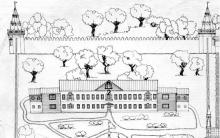
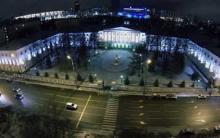
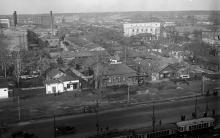
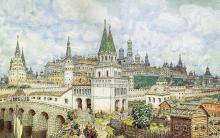
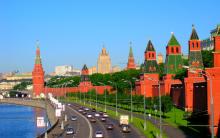
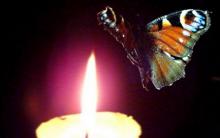




Funeral service and funeral of Archimandrite Kirill Pavlov
The meaning of Aesop's parable of tongues
Pages of Memories (Ariadne Ephron)
How to adjust vacation balances and how to change the number of vacation days per year from a certain date
Document "adjustment of receipt" Adjustment of receipt in 1s 8